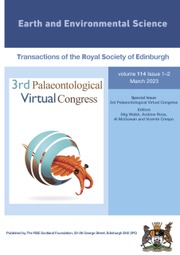Siluria
The Scottish geologist Sir Roderick Impey Murchison (1792–1871) first proposed the Silurian period after studying ancient rocks in Wales in the 1830s. Naming the sequence after the Silures, a Celtic tribe, he believed that the fossils representing the origins of life could be attributed to this period. This assertion sparked a heated dispute with his contemporary Adam Sedgwick, ultimately ruining their friendship. First published in 1854, Siluria is a significant reworking of Murchison's earlier book, The Silurian System, which had appeared in 1839. Thorough in his approach, he combines his own findings with those of researchers around the world, touching also on the later Devonian, Carboniferous and Permian periods as well as questions of natural history. An important text in nineteenth-century geology and palaeontology, the work contains a valuable geological map of Wales along with detailed engravings of fossils, including crustaceans, cephalopods and fish.
Product details
No date availablePaperback
9781108067195
624 pages
216 × 140 × 35 mm
0.78kg
183 b/w illus. 1 map
Table of Contents
- Preface
- 1. Introduction
- 2. Base of the Silurian rocks
- 3. Lower Silurian rocks
- 4. Lower Silurian rocks (cont.)
- 5. Upper Silurian rocks
- 6. Upper Silurian rocks (cont.)
- 7. Silurian rocks of Britain
- 8. Organic remains of the lower Silurian rocks
- 9. Fossils of the upper Silurian rocks
- 10. The Devonian rocks, or old red sandstone
- 11. Carboniferous rocks
- 12. Permian rocks
- 13. General view of the Silurian, Devonian, and Carboniferous rocks of Scandinavia and Russia
- 14. Primeval succession in Germany and Belgium
- 15. Silurian, Devonian, and Carboniferous rocks of France, Spain, Portugal, and Sardinia
- 16. Succession of primeval rocks in America
- 17. On the original formation of gold
- 18. Conclusion
- Appendix
- Index
- Plates.







